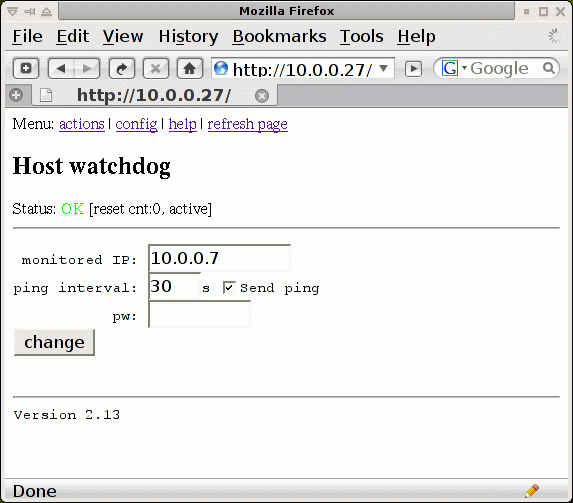An ethernet network host watchdog
![[Illustration]](../../common/images2/article090201/host_wd.jpg)
Abstract:
A watchdog is a piece of equipment that supervises other systems
and resets them in case it detects that those systems are failing.
Such watchdogs can be used to make systems more reliable. Reliability is
a major cost factor in many cases. Think about remote equipment where
it might take hours to get on site and service it. In some cases it
is even impossible to get there. Think about satellites in outer space.
A crucial factor is of course also the reliability of the watchdog. A small,
independent watchdog device is therefore generally better then a
software only solution implemented in the system itself. The Linux kernel
has e.g such a watch dog called "softdog".
This softdog can help a lot to
improve the reachability of a server but it can not cover all possible
cases because it is part of the failing system. Finally a watchdog can never cover a total equipment failure. It is a
good remedy for temporary problems that go away after a reboot.
_________________ _________________ _________________
|
![[Illustration]](../../common/images2/article090201/host_wd.jpg)

